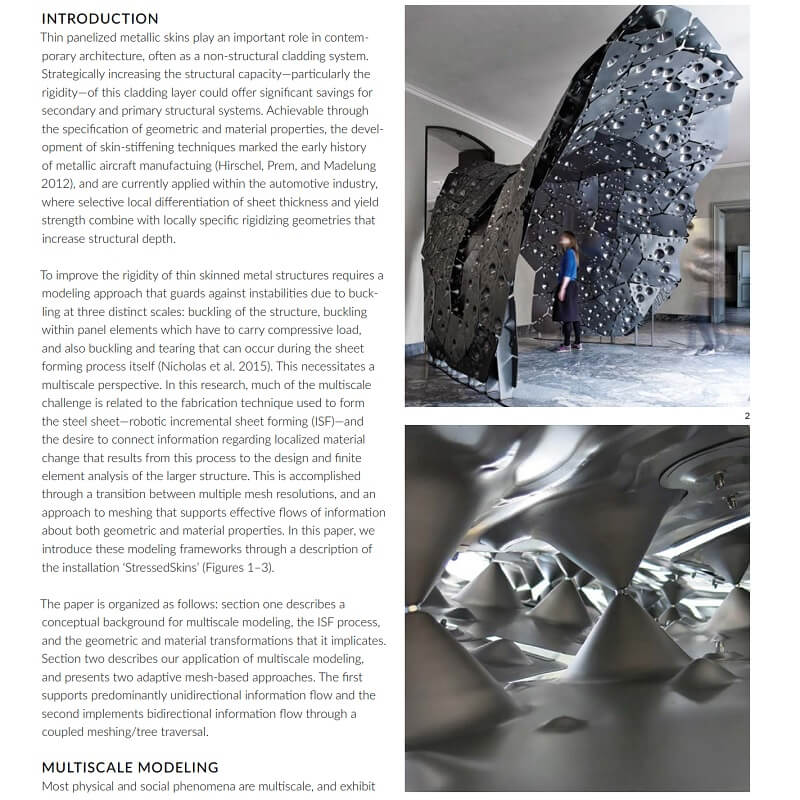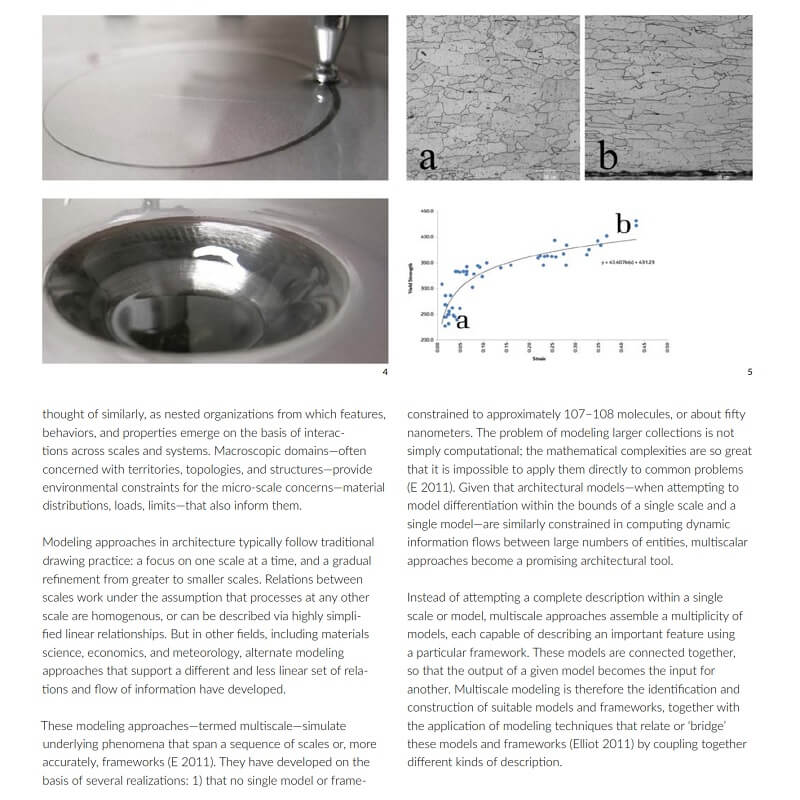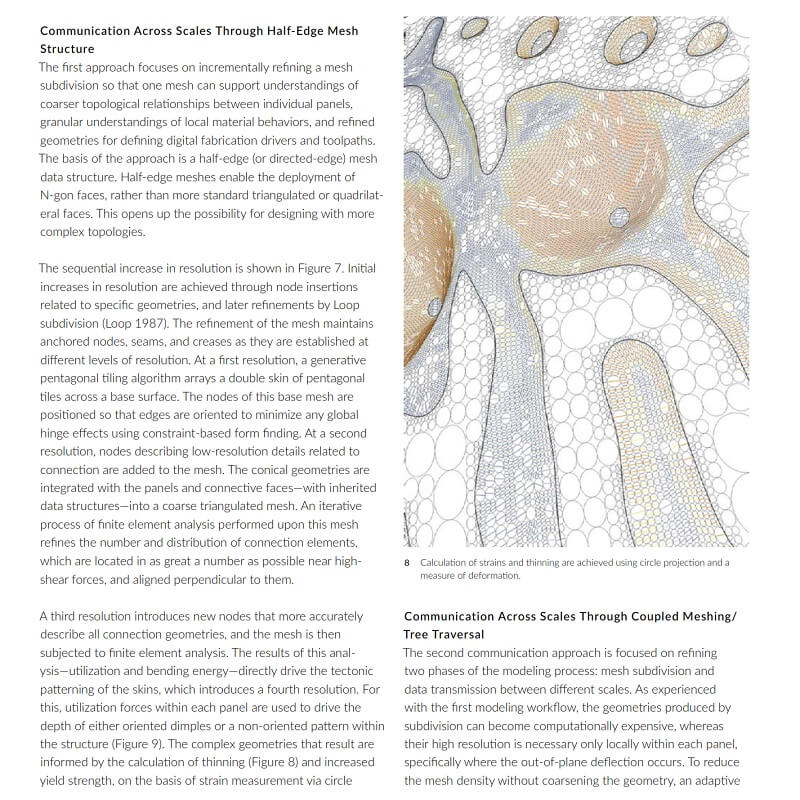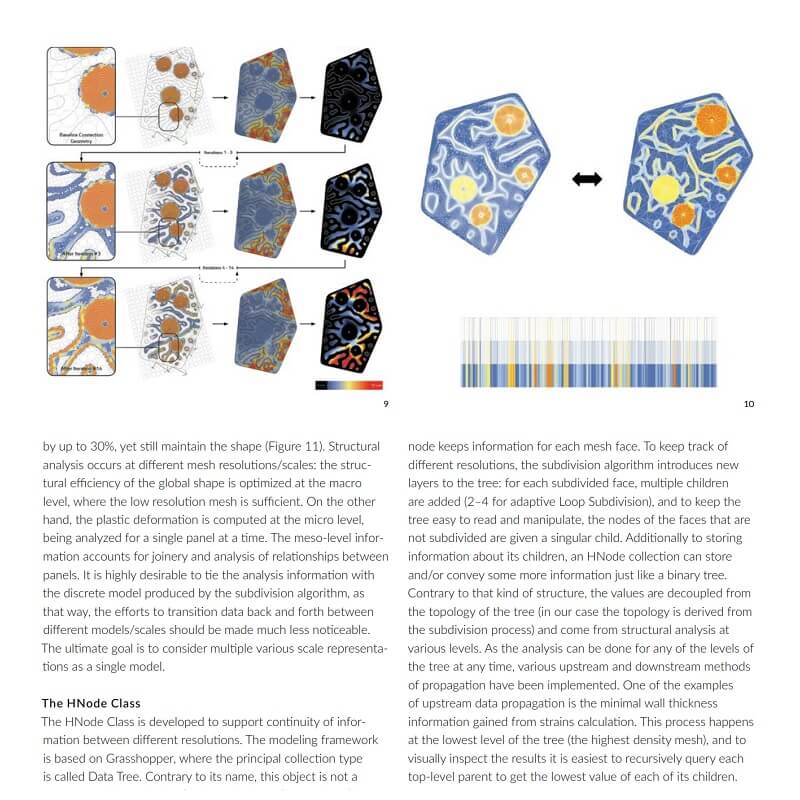Multiscale Modeling
Concepts and Methodologies for
Multiscale Modeling
A Mesh-Based Approach for Bi-Directional Information Flows
Paul Nicholas
Mateusz Zwierzycki
David Stasiuk
Esben Nørgaard
Mette Ramsgaard Thomsen, CITA / Royal Danish
Academy of Fine Arts

This paper by Paul Nicholas, Mateusz Zwierzycki, David Stasiuk, Esben Nørgaard Mette Ramsgaard Thomsen, introduces concepts and methodologies for multiscale modeling in architecture, and demonstrates their application to support bi-directional information flows in the design of a panelized, thin skinned metal structure.
 Parameters linked to the incremental sheet forming fabrication process, rigidisation, panelization, and global structural performance are included in this information flow. The term multiscale refers to the decomposition of a design problem into distinct but interdependent models according to scales or frameworks, and to the techniques that support the transfer of information between these models.
Parameters linked to the incremental sheet forming fabrication process, rigidisation, panelization, and global structural performance are included in this information flow. The term multiscale refers to the decomposition of a design problem into distinct but interdependent models according to scales or frameworks, and to the techniques that support the transfer of information between these models.
 Authors describe information flows between the scales of structure, panel element, and material via two mesh-based approaches. The first approach demonstrates the use of adaptive meshing to efficiently and sequentially increase resolution to support structural analysis, panelization, local geometric formation, connectivity, and the calculation of forming strains and material thinning.
Authors describe information flows between the scales of structure, panel element, and material via two mesh-based approaches. The first approach demonstrates the use of adaptive meshing to efficiently and sequentially increase resolution to support structural analysis, panelization, local geometric formation, connectivity, and the calculation of forming strains and material thinning.
 A second approach shows how dynamically coupling adaptive meshing with a tree structure supports efficient refinement and coarsening of information. The multiscale modeling approaches are substantiated through the production of structures and prototypes.
A second approach shows how dynamically coupling adaptive meshing with a tree structure supports efficient refinement and coarsening of information. The multiscale modeling approaches are substantiated through the production of structures and prototypes.






























Comments